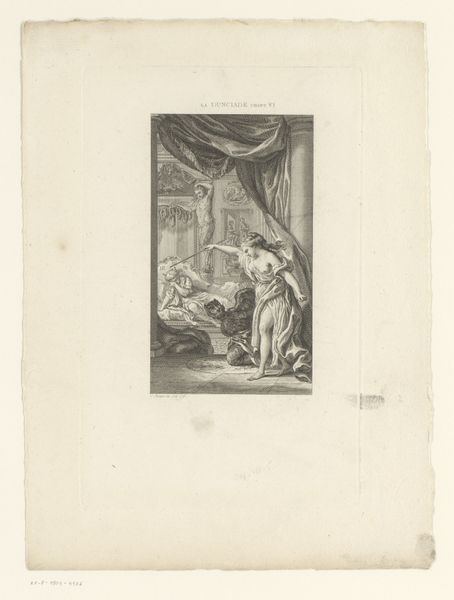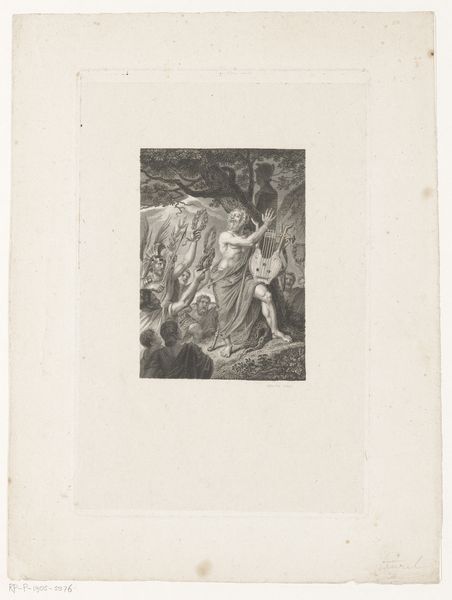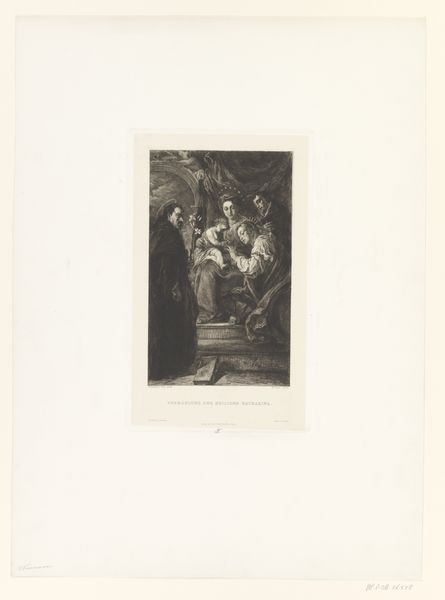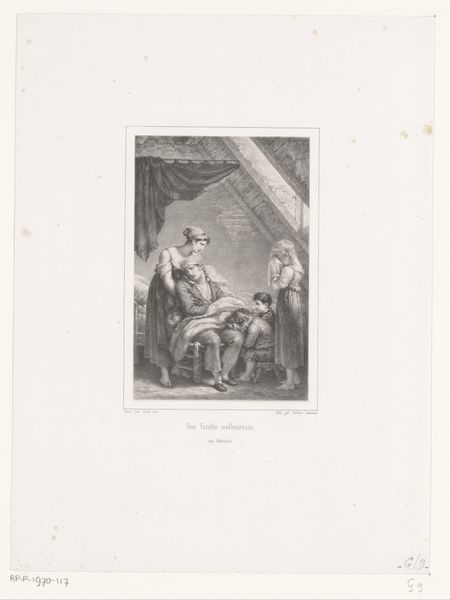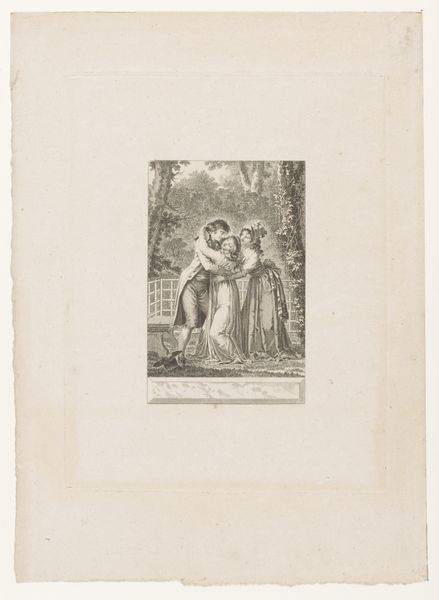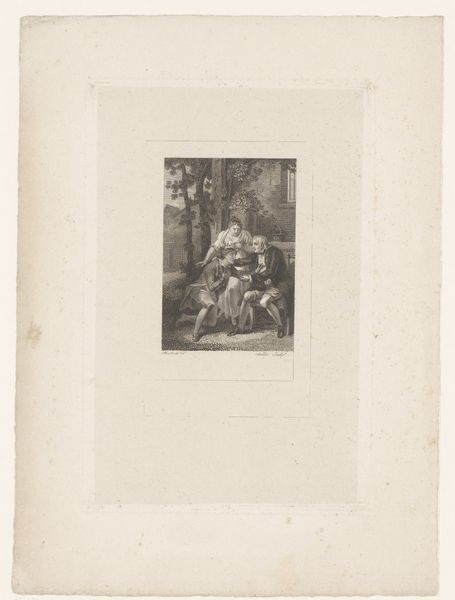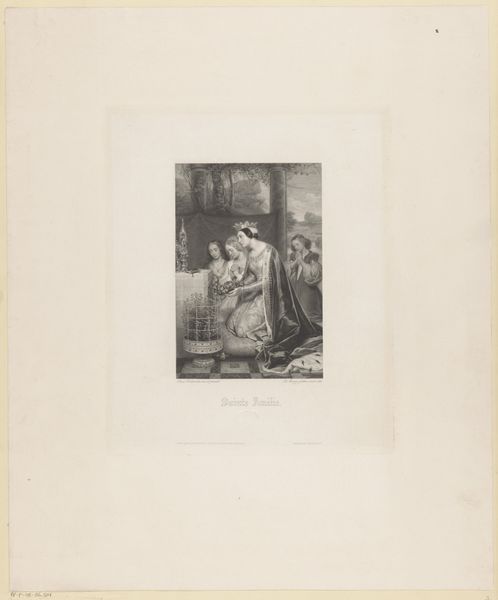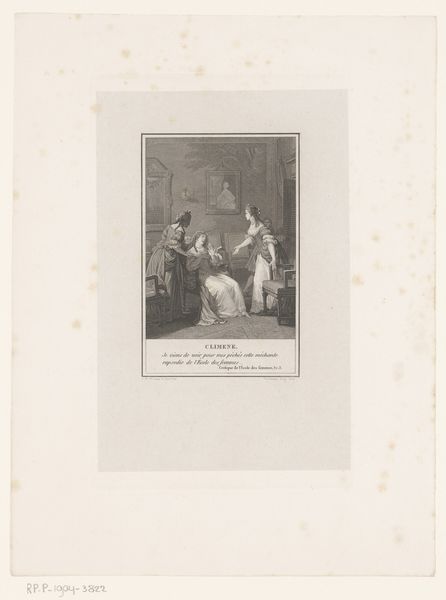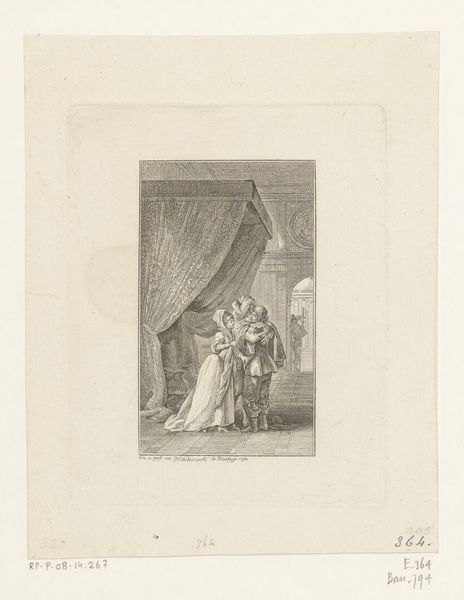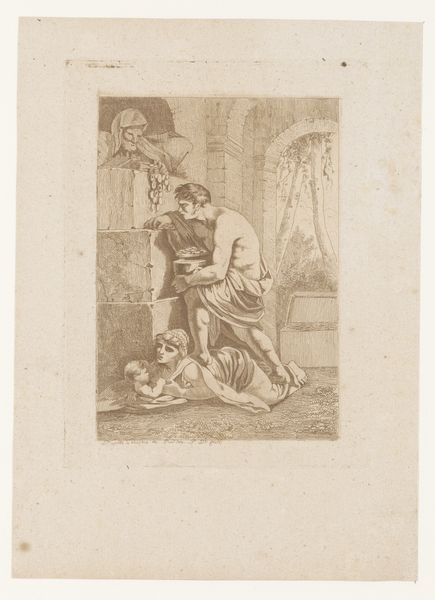
Interieur met fluitspelende jongen en meisje dat aardappels schilt 1834 - 1896
0:00
0:00
print, engraving
#
portrait
#
ink paper printed
# print
#
pencil sketch
#
personal sketchbook
#
genre-painting
#
engraving
#
realism
Dimensions: height 144 mm, width 97 mm
Copyright: Rijks Museum: Open Domain
Johann Kaspar Eissenhardt created this print, titled "Interior with flute-playing boy and girl peeling potatoes," sometime in the 19th century using etching techniques. The fine lines and subtle tonal variations of the print are achieved through a painstaking process. The artist would have covered a metal plate with a waxy, acid-resistant ground, then scratched an image into it with a sharp needle. This process exposes the metal, which is then submerged in acid. The acid bites into the exposed lines, creating grooves that hold ink. The plate is then inked, wiped clean, and pressed onto paper, transferring the image. This printmaking method allowed for the mass production of images, and the even distribution of artwork. The scene depicts the everyday life of two children in a domestic setting, with a sense of casualness and ease. The print captures the scene with delicate precision, reminding us of the labor and skill involved in its production, and it shows the reality of working-class people in that time. Ultimately, understanding the materials and processes behind prints like this one allows us to appreciate not only the final image, but also the broader social and economic context in which it was created.
Comments
No comments
Be the first to comment and join the conversation on the ultimate creative platform.

